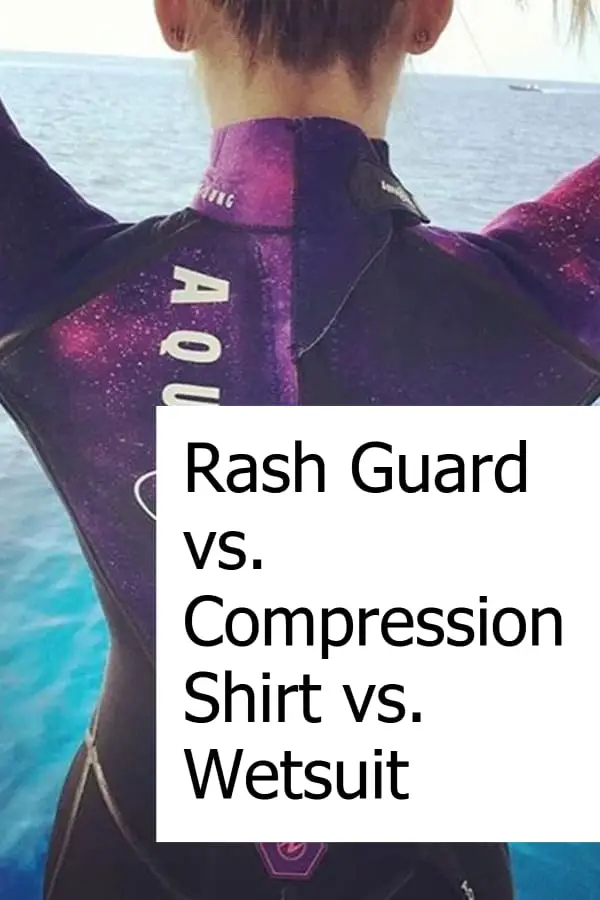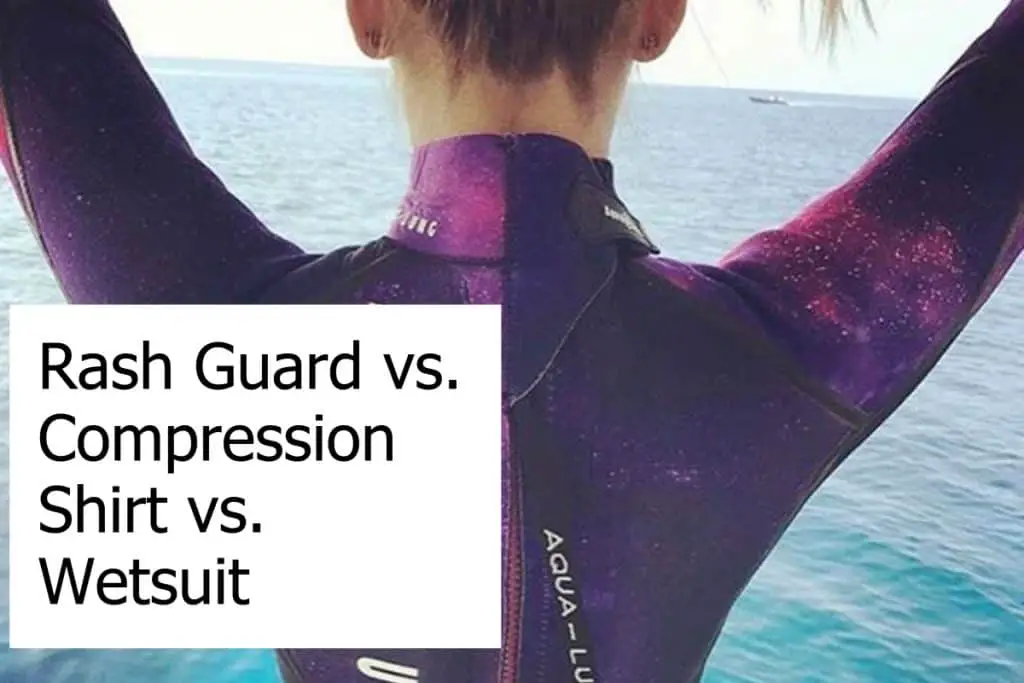Rash Guard vs. Compression Shirt vs. Wetsuit – What to use when?
The technology that makes up your diving equipment is truly outstanding. And new items get introduced regularly.
Take for example the rash guard. It’s not that long ago that as a diver you only had a choice of wearing a wet suit in different thicknesses. Today, you can choose between a rash guard, wet suit, or compression shirt if you want to dive.
What is the Difference between a Wetsuit, Compression Shirt, and Rash Guard – When do you need which?
A rash guard and compression shirt are closely related. The rash guard is fitting your body while the compression shirt is tailored to tightly mold to your body. It can be a little too tight when snorkeling. Rash guards and compression shirts can come with sun protection. The wetsuit on the other hand is keeping you warm in colder environments. Wetsuits are stiffer and heavier compared to rash guards or a compression shirt.
So, when should you pick either of them? Or, should you only wear a rash guard or compression shirt under a wet suit? Let’s have a look at the three garments in detail.
Layering Garments when Diving or Snorkeling
Think about it, just a few decades ago, divers had no idea that the sport could get so advanced, and it’s been amazing to watch the developments unfold to make diving simpler and safer. From your facemask to your rebreather, right down to fin design, every piece of gear that you don when you’re getting ready to step off the gunwale is perfectly designed.
One thing that we don’t often recognize, however, is how far the clothing itself has come. You might have found yourself strolling into a diving store with the simple intention of buying a new set of diving clothes only to be thwarted by the many different options available.
When to wear a Rash Guard, Wetsuit, or Compression Shirt?
Do you go for a rash guard or a compression shirt? Long sleeve or short? And, when is it necessary to get a wetsuit? What should you wear under your wetsuit? Is there a color that is best? A thickness? Do you need sun protection?
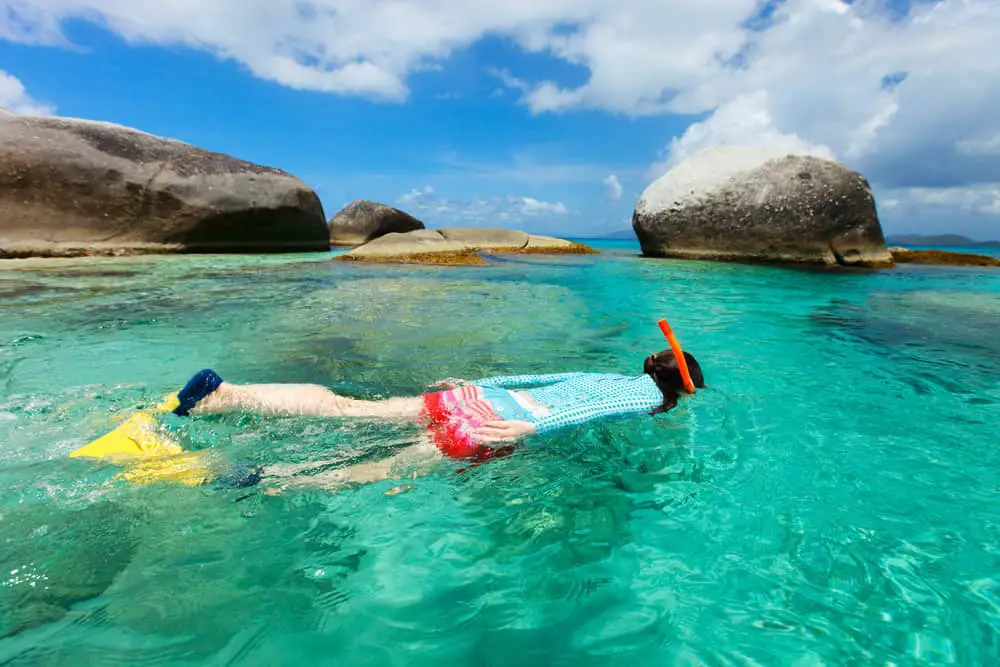
There are many questions to answer, so here’s a quick guide to getting the best, most practical attire for your diving wardrobe:
The Rash Guard
Rash guards are a go-to shirt for not only divers, but also snorkelers, surfers, swimmers, and even land-based athletes like baseball and soccer players. And for good reason: these thin-layered base shirts protect you from sunburn, cuts, stings, and, of course, rashes.
Versatile Fabric to wear on top or underneath
Rash guards are thick enough to keep you warm in water that isn’t quite cold enough for a wetsuit and thin enough to wear under one in colder water. You can even wear rash guards under a wet suit, or find a neoprene rash guard when the water is too warm for a wet suit and too cold for a rash guard!
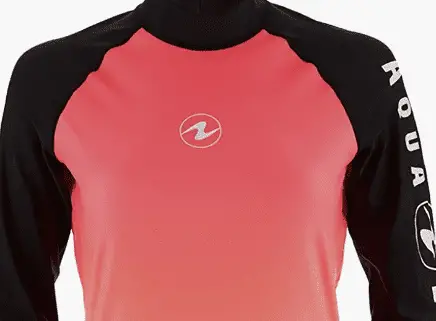
Because they’re so popular, these rash guards are available everywhere, relatively cheap, and in a variety of styles. Short- or long-sleeved – thin or thick. Bright pink or midnight blue. You’ll be able to find rash guards in all colors, sizes, any other style you can think of. Whatever you want to use rash guards for, you will find what you’re looking for.
Ideal for Snorkeling – SPF built-in
Rash guards are in many ways ideal for snorkeling. A lot of these rash guards come with SPF built-in to offer sun protection. When you snorkel you won’t have to worry about sunscreen on your back! Do not forget that this is also very important when you’re considering any of these types of gear for your kids!
Layering Rash Guards for Warmth and Sun Protection
Snorkelers also appreciate that you can easily layer rash guards. You can wear a short-sleeve one when you’re on the warm beach and simply put a long-sleeve one on top when you snorkel and the water is a little cooler. A long-sleeve rash guard also has the advantage that it offers sun protection for your arms from harmful UV rays when you snorkel. So, consider mixing up rash guards with short sleeves and with long sleeves when you go snorkeling or for any other water sports.
Drying Quickly with Modern Fabrics
In the past rash guards were not that convenient when you kept them on after getting out of the water. They needed a while to dry and often felt cold on your skin. Today’s rash guards not only offer SPF protection but are in most cases quick-drying. You get out of the water and be dry quickly even if you keep the rash guard on.
Compression Shirt
At first glance, this shirt will look similar to the rash guard. And, like the rash guard, it can be seen donned by runners, climbers, and other above-water athletes.
Compression Shirt vs Rash Guard
But, there is a key difference: the compression shirt is tailored to not only sit closer to the body but actually mold to it. A compression shirt is elastic in some areas and tight in others, allowing for optimal blood flow for enhanced performance. According to the manufacturers, this style prevents injury and reduces after-dive soreness.
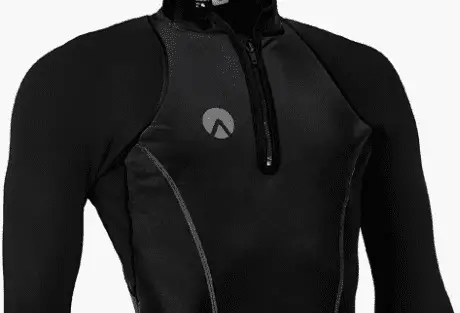
Tailored Fit of a Compression Shirt
Of course, this style isn’t for everyone. Some argue that compression technology doesn’t really work, or feels uncomfortable.
Do Compression Shirts really work?
There is research on both supporting and debunking compression shirts, so the decision really comes down to you. If it feels good, then give it a try. If not, stick to the rash guard.
Wetsuit
All said and done, the wetsuit is often the most important part of a diver’s attire. In cold water, it’s absolutely necessary. And even in warmer water, it can be an advantage.
Different Styles of Wetsuits – Short or Long, Thin or Thick
Wetsuits can cover the entire body, or stop at the knee and elbow, and the material and thickness can vary widely. That’s a lot to consider, but here are a few things to keep in mind:
- Warm water will usually call for a thickness of 2mm to 3mm; anything thicker will be perfect for colder climates.
- How a wetsuit is sewn is important. A glued stitch won’t last as long as something like a blind stitch, which is a more intricate construction, will endure longer (and will be more expensive).
- Your wetsuit should be snug, but not suffocating. Any gaps around underarms, the crotch, and the small of your back will drag you down, so make sure that your wetsuit feels like a second skin all over.
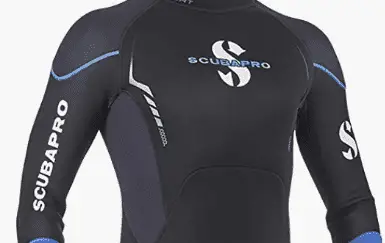
When should you wear what?
That’s going to depend a lot on your personal preferences as well as the environment you’ll be diving in.
Consider the Water Temperature
For instance, consider the temperature. In frigid waters, you’re going to need a wetsuit, and probably some kind of undershirt. If you’re in the tropics, on the other hand, you’ll probably choose something light-weight, like a compression shirt or rash guard.
Diving at Reefs, Wrecks, or Caves – Protect yourself!
Also, think about what obstacles you might face in the water. If you’re worried about abrasions or stings, you may want to cover your entire arms with a rash guard, even in warm water. Finally, how much sun exposure do you anticipate?
Best Choice of Gear for a Scuba Dive – Rash Guard or Wetsuit or a Compression Shirt?
These are all questions that will help you determine what gear is best for your dive. Of course, the best advice will come from experts in the area, so make sure to get as many opinions as you can.
Ultimately, you have a lot of decisions to make. When you start searching for diving attire, you’ll be figuring out style, function, durability, and environment. These tips are just the start for you to find the perfect diving wear!
